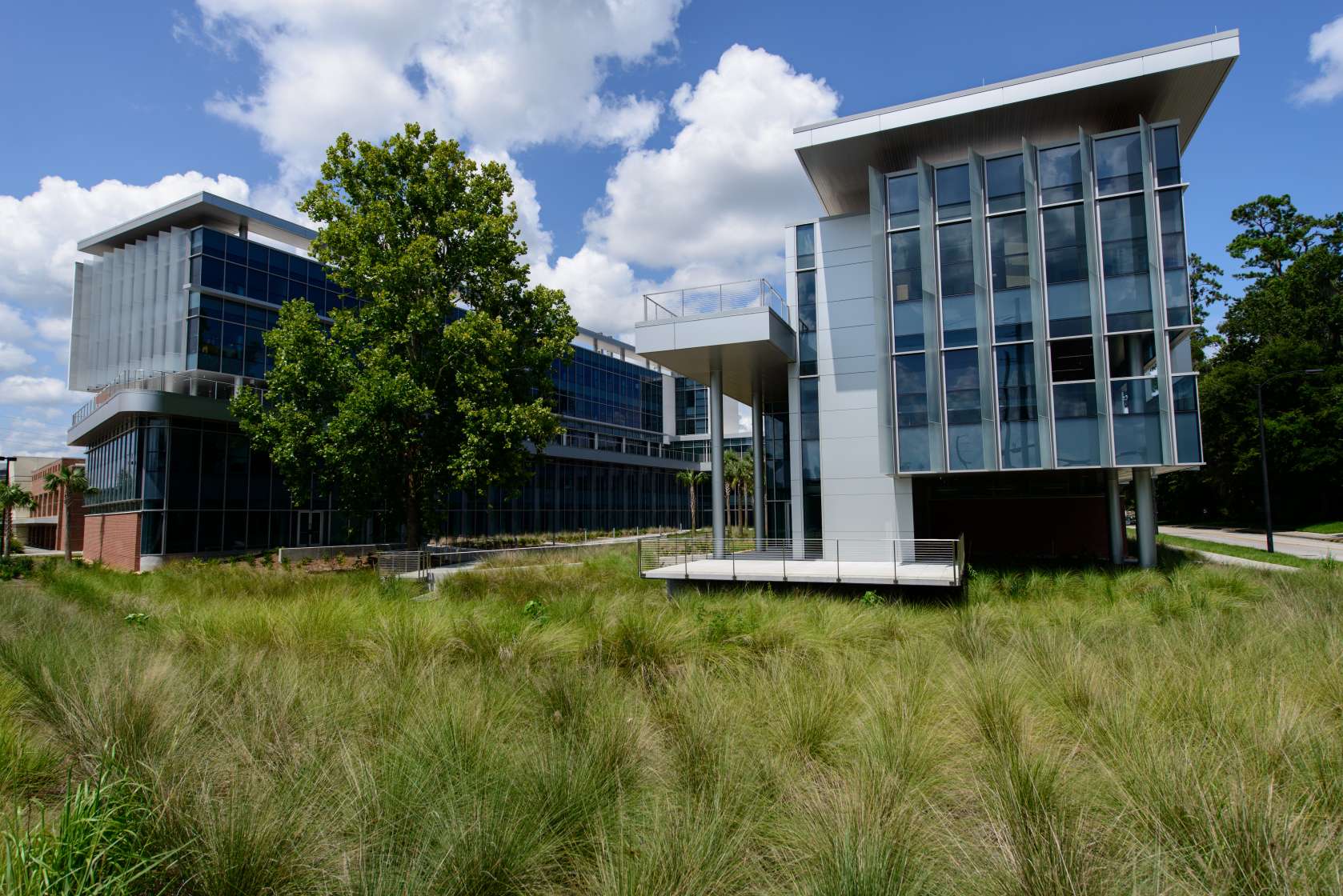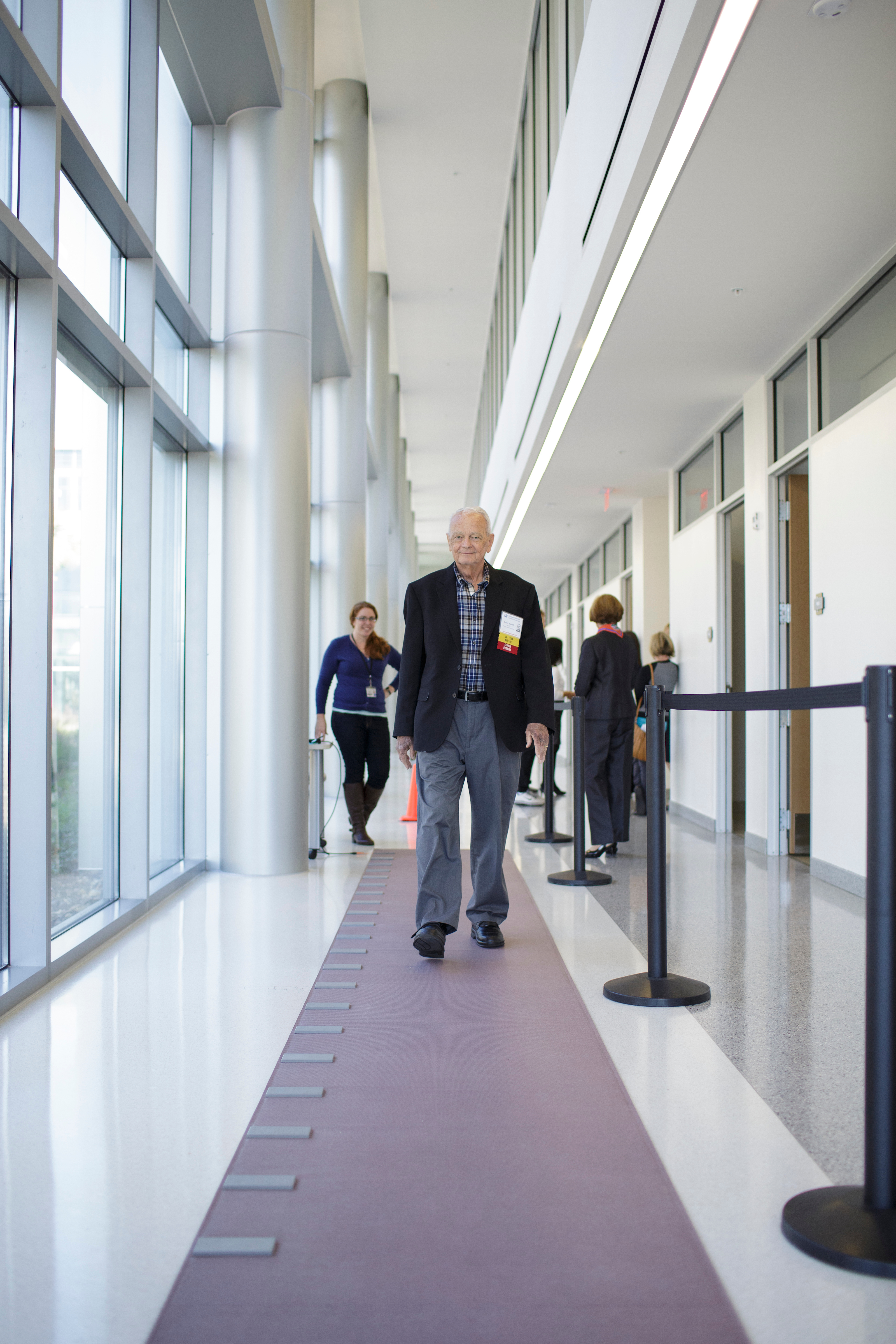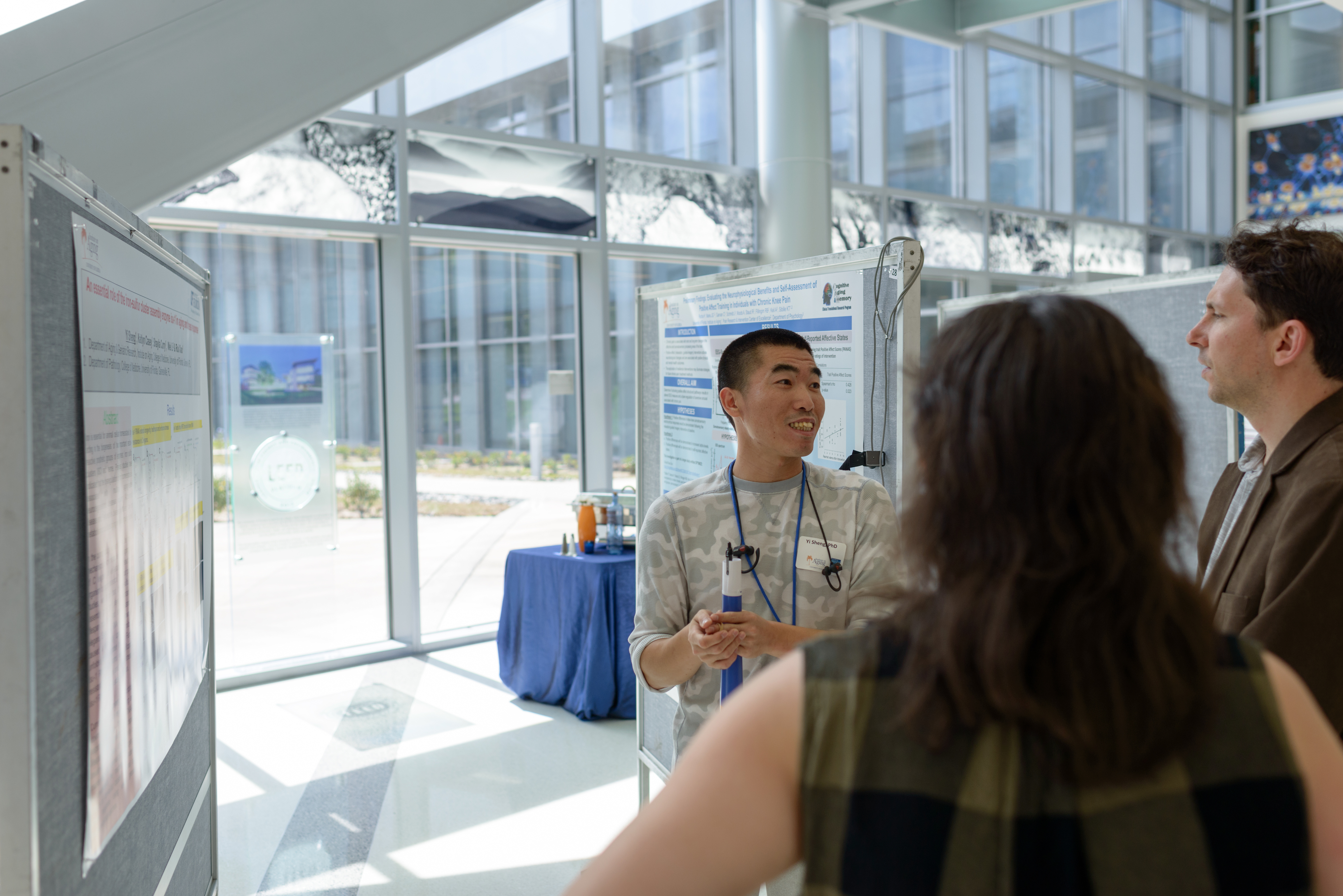University of Florida Uses ARRA Funds to Construct a New Home for the Institute on Aging

In 2020, Americans ages 65 and older comprised 16.8% of the population, or almost 56 million people, according to the U.S. census. This population has been growing for the last 100 years—a trend that gained momentum in 2010 and is expected to continue as the baby boomer generation ages. In response to the increasing population and growing health care needs of the aging community, the University of Florida (UF) received funding from ORIP (C06RR029852) to build the Institute on Aging (IOA) wing of the Clinical and Translational Research Building (CTRB) to develop novel research approaches aimed at improving the health, independence, and quality of life of older Americans (Figure 1). The new facility has fostered research in many areas, including wearable devices for health monitoring and new technologies for measuring bone strength.

The award was administered through the 2009 American Recovery and Reinvestment Act (ARRA) grant program, which aimed to stimulate the U.S. economy, create and preserve jobs, and advance scientific research. A total of 148 ARRA awards were granted through ORIP to support the construction or renovation of 64 animal facilities, 56 research laboratories, 17 clinical research facilities or laboratories, 8 imaging facilities, and 7 data centers.
The 127,000-square-foot CTRB cost approximately $45 million (M), with $15 M coming from the ORIP ARRA grant awarded to build the IOA-CTRB wing. Groundbreaking for the CTRB occurred in 2011, and construction was completed in 2013 (Figure 2). The CTRB has since become a vibrant center for aging and other translational research. Areas of research include the biology of aging, cancer and aging, pain and aging, neurocognitive aging, diabetes, gene therapy, and muscular dystrophy. As one example, a multidisciplinary team followed more than 400 sepsis survivors after they were discharged from the hospital to assess their functional recovery. This prospective cohort study—which involved follow-up visits with discharged patients conducted at the IOA-CTRB—aimed to gain mechanistic insight into poor long-term outcomes that older patients often experience after sepsis. The study team recently identified early biomarkers that are altered in older sepsis patients.1
Dr. Todd Manini commented on the success of the new IOA-CTRB wing: “It was an exciting time for us because we could all be in the same place at the same time. We bump into each other more often, have ideas, and collaborate even more seamlessly than we did before.” Dr. Manini is Co-Director of the Claude D. Pepper Older Americans Independence Center (OAIC) at UF, Director of the NIH-funded T32 Translational Research on Aging and Mobility program, Professor and Division Chief of Clinical and Population Health Integration in the Department of Health Outcomes and Biomedical Informatics, and co‑leader of the Data Science and Applied Technology Core of the UF OAIC.
The IOA-CTRB also has supported researchers in aging at UF as they translate preclinical findings into clinical trials. The UF IOA led the Lifestyle Interventions and Independence for Elders (LIFE) Study, which involved eight sites and 1,635 participants. The study concluded that moderate physical activity helped adults ages 70 to 89 years maintain their ability to walk and stave off major mobility disability. Over time, the LIFE Study has generated 115 peer-reviewed studies, 19 ancillary studies, and 38 independently funded grants and trials.
UF established the IOA to strengthen the university’s aging research portfolio. The IOA’s mission and vision focus on creating a multidisciplinary research, education, and health care hub to address the unique health problems of older people and promote the health, independence, and quality of life of older adults. In 2007, the UF College of Medicine established the OAIC (P30AG028740) through an award from the National Institute on Aging (NIA) to support aging research and career development. The IOA and OAIC work in parallel and across departmental boundaries, with the IOA supporting shared equipment and research spaces and the OAIC funding shared resources via eight integrated cores: Biostatistics, Clinical Research, Data Science, Leadership and Administrative, Metabolism and Translational Science, Pilot and Exploratory Studies, Research Education, and Systems Physiology and Omics.
Initially, the IOA was scattered across the UF campus, which made coordinating multidisciplinary research and clinical programs challenging. The ARRA funding announcement from ORIP in 2009 was the perfect opportunity to construct a central IOA-CTRB hub to host new shared resources to enhance collaboration and research capacity, promote all stages of translational research, and address the emerging clinical research needs of older adults. By leveraging ARRA funds, UF was able to expand the vision by acquiring bond funding to build a home for the Clinical and Translational Science Institute (CTSI) in a second wing of the CTRB, thereby expanding the vision of the IOA. The CTSI was founded to speed the translation of scientific discoveries into improved health by strengthening the university’s ability to conduct clinical and translational research, and its mission parallels that of the IOA. As Dr. Manini noted, “We do our best work when we partner with people.” As co-leader of the OAIC’s Data Science and Applied Technology Core, Dr. Manini works with OAIC and IOA researchers on new approaches to analyzing and understanding data collected from wearable technologies. “We’ve always wanted tools that can capture life experiences in the real world,” he added.

Dr. Manini and colleagues have been developing a wearable smartwatch called the Remote Online Assessment and Mobility Monitor, or ROAMM (Figure 3). Dr. Manini explained that the experiences of older adults—including changes in physical ability, cognitive function, and pain levels—are not well understood. The ROAMM smartwatch contains sensors for capturing movement data and has an interface to collect reports from the user. ROAMM currently is being used to monitor patients who have undergone coronary artery bypass surgery, which can have dangerous postsurgical complications. ROAMM helps patients and their doctors communicate after surgery, relieving the burden on patients to contact their doctors if serious issues occur. Dr. Manini and his colleagues are studying whether ROAMM helps inform the care team about the patient’s status.
Dr. Manini’s research team also is interested in using wearable technology to collect high-resolution data on geriatric patients to train artificial intelligence (AI) models. “Historically, we don’t have a ton of high-resolution data on these patients,” clarified Dr. Manini. “The data that we do have is from electronic health records, and many of the syndromes that we study are not well represented in electronic health. So, we have to generate our own data to start to inform AI models.” Another challenge the group faces is making the devices user friendly. To ensure that their technology can be used by an aging population, Dr. Manini and his colleagues have held focus groups and interviews to incorporate user feedback into the design process, resulting in 70% to 80% compliance rates during clinical studies.
IOA researchers also collaborate with industry partners, driving advances in medical technology. Dr. Manini shared the example of a company that developed a new bone-strength measuring device. Currently, bone strength is measured using X-rays, with bone density serving as an indirect proxy for strength. The company had developed new technology that uses high-frequency sound vibrations to directly estimate bone strength and is collaborating with UF to test the device in patients. “We’re hoping that this will be a nice technology to complement what already exists and that we’ll be able to identify people who are more likely to have a fracture better than our X-ray technologies we have today,” noted Dr. Manini.

In addition to these research applications, the CTRB has yielded local and regional economic benefits. Although the IOA-CTRB initially was projected to support around 100 employees, 289 employees worked in the expanded CTRB in 2022, facilitating 961 research projects led by 150 principal investigators across 30 departments and 8 colleges (Figure 4). The facility has supported more than 20 clinical fellows in geriatrics and approximately 65 faculty and postdoctoral scholars focused on aging research, and several NIA-funded research training programs are in place. Since 2013, the number of NIA-funded projects at UF has grown from 13 (totaling $20 M) to 87 (totaling $43 M). Several UF projects have resulted in Small Business Innovation Research and Small Business Technology Transfer awards and collaborations. CTSI’s average annual economic contributions from 2017 to 2021 were $327.2 M value-added output at the county level and $444 M at the state level, along with 2,745 and 4,518 additional jobs, respectively. The building received Leadership in Energy and Environmental Design certification in 2013 and is known for its green design principles and welcoming atmosphere for researchers and patients alike.
According to Dr. Manini, the ORIP-funded IOA hub was critical for the success of the aging program at UF. “Having an institute and growing the aging footprint at the University of Florida and all around the North Central Florida area—without the funding, it would have been a lot more difficult to do that,” he emphasized.
Visit ORIP’s website for more information on the ARRA program and awards.
References
1 Carmichael ED, Apple CG, Kannan KB, et al. Chronic critical illness in patients with sepsis is associated with persistent anemia, inflammation, and impaired functional outcomes. Am Surg. 2023;89(6):2563–2571. doi:10.1177/00031348221104252.



